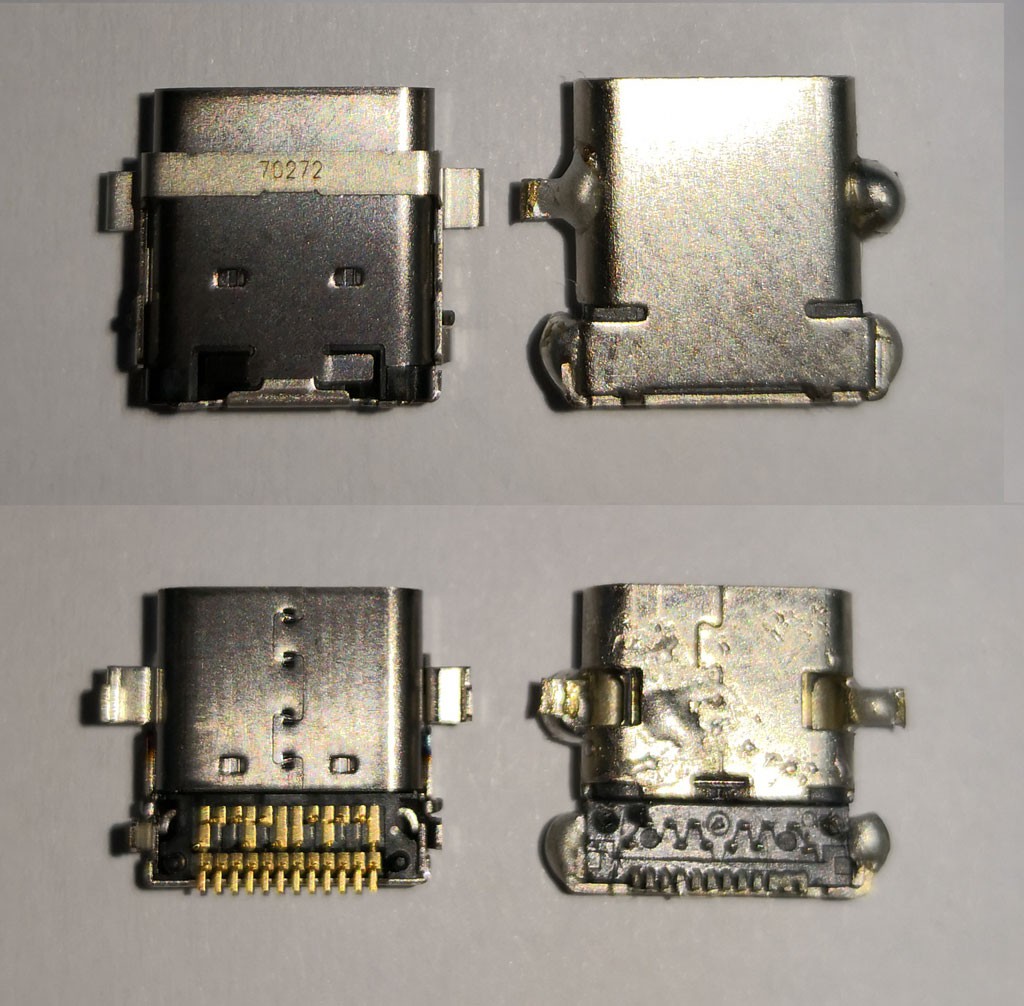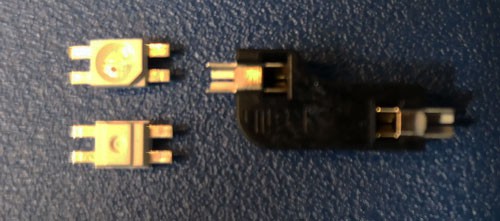The BOM has a number of common components; resitors, capacitors and IC's. Not much to say on those, they are all readily available. The part that gave me the most trouble was the USB Type C connector. It's a very high quality connector from Japan. There was no Chinese copy with the same pinout. There was one close, but not close enough. I had to special order these parts, and I was none to pleased about it. A Similar Chinese parts can be had for $0.30, with these being more like $3. I considered changing the PCB but I was torn. The PCBs had arrived. It would have been cheaper to throw them out, modify them and order the Chinese parts but I committed to not changing the design files, so I just ordered the Japanese parts. To be fair they are extremely high quality and likely to never break.

Japanese connector is the one on the left.
There were two parts listed from a company called Kaihua. This is a Chinese mechanical switch manufacturer. They also manufacture a switch socket that allows for hot swapping switches. Most other keyboards have switches soldered to the PCB. With these sockets, you can replace switches without soldering. They were also listed as the source for the LEDs for the PCB. This was odd because they can't possibly manufacture LEDs. The sockets were pretty easy. I quick email inquiry and I had those on order. MOQ of 2000pcs but still not hard to get. I also ordered mechanical switches from them. Keyboard mechanical switches have lots of types and manufacturers. I chose Kaihua switches because I have no experience with any mechanical keyboard switches and I was ordering parts from them anyway.
Kaihua said the LEDs would take a month to get and they were very expensive. I ended up finding an LED manufacturer online and having them custom make the LEDs. They had a similar LED but the pinout was not compatible, so I had them make me some with the correct pinout. Less than half the price and they arrived in under a week.

What makes these LEDs a bit unique is that you can mount them either up or down. This allows them to be assembled from one side of the PCB, but light up either the top or bottom of the PCB. A hole is cut in the PCB and the LED sits half in the PCB and half above. Neat design. One down side, for me anyway, is that to use a pick and place machine with these, you need one roll with the LEDs facing up, and one roll with the LEDs facing down. A pick and place machine cannot flip and component. It can only rotate it. So I ended up ordering two rolls of these, though one would have been enough as far as quantity goes.
 Brian Barrett
Brian Barrett
Discussions
Become a Hackaday.io Member
Create an account to leave a comment. Already have an account? Log In.
LEDs arrived 05/28/18
USB sockets arrived 05/26/18
Again I'm a bit late with the log entry
Are you sure? yes | no